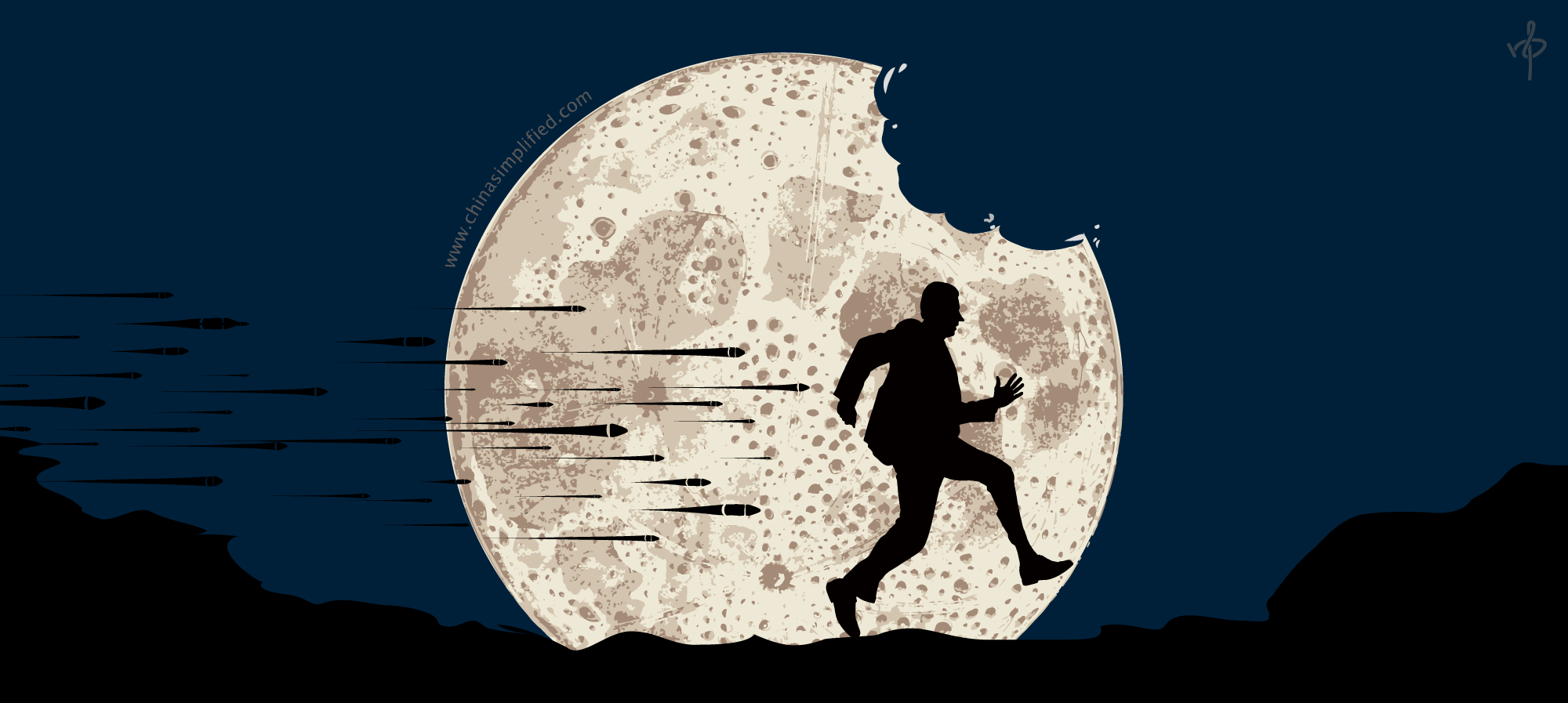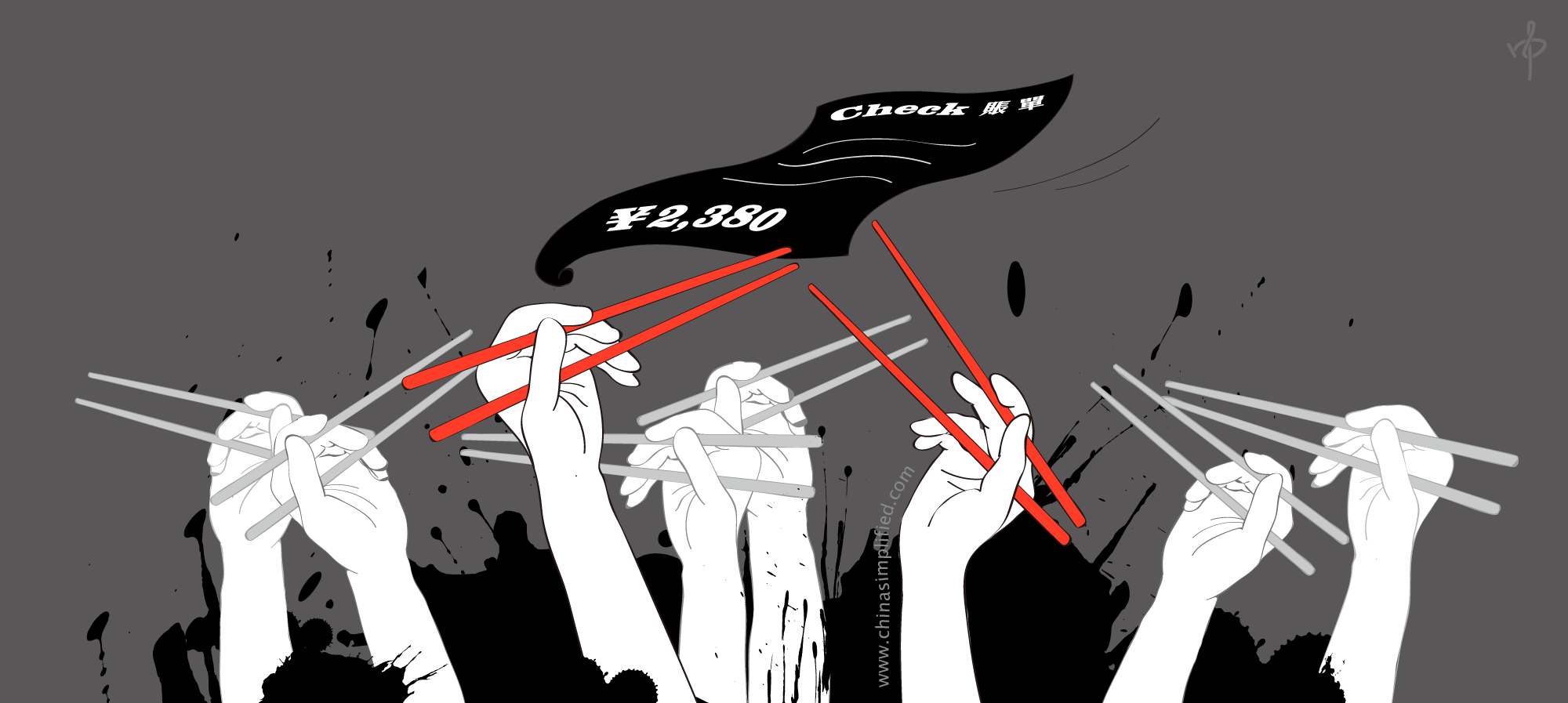When new to a culture, it’s easy to miss certain holidays. Not this one. It’s everywhere. If mooncakes were bullets, we’d all be dead.
Get your mooncakes – hot, cold or frozen! Traditional mom & pop shops, 24×7 convenience stores, internet pop-ups, office gift packs, breakfast diners, even Starbucks and Haagen-Dazs all conspire to ensure nobody goes mooncake-less before, during and after this holiday. For several days, you’ll have them for breakfast, lunch, afternoon tea, dinner, late night snack and again for breakfast. And you’ll line up for more, especially the xiān ròu yùe bǐng 鲜肉月饼 (lit. meat mooncake).
Not everyone eats them, of course. They’re great for gifting (and re-gifting and re-re-gifting) like a commodity or currency, an autumn bitcoin of sorts. Who knows how many hands have passed them along on their way to you?
The Mid-Autumn Festival lands on the 15th day of the eighth month on the Chinese lunar calendar when the moon is believed to be at its fullest. Originally intended to celebrate the fall harvest, the festival over time has been dramatized as more mythical or entertaining than agricultural.
The drama’s leading lady is named Chang’e. Weirdly enough, there are conflicting versions of her lunar escape:

Version One: Chang’e loved her husband so much…
Her husband saved the world from burning by shooting down nine suns to leave only one for light. For this great deed he received an elixir, giving it to Chang’e because he didn’t want to become immortal without her. On the 15th day of the eighth month, one of his apprentices pestered Chang’e for the elixir. She refused, swallowed it and flew into sky. She missed her husband so much that she picked the closest planet – the moon – on which to land. Her husband displayed offerings in her memory every year on the same night.
Version Two: Chang’e hated her husband so much…
After her husband saved the world by shooting down the nine suns, he received the elixir and people worshipped him. But then he became more and more cruel to others. Chang’e came to hate him. She stole the elixir to prevent him from hurting others. As she flew away to the moon, he tried to shoot her but failed, and his own anger consumed him. People miss her and display offerings in her memory every year on the same night.
What?! Two completely opposite versions of the same story?
Anyway… regardless which version you prefer, it’s easy to respect the immortal Moon Goddess for her integrity, loyalty and sense of justice. And don’t we all need a few legendary figures to make the festivals more significant and meaningful?

Suzhou Style (left) has a fluffy flour skin, with sweet or salty fillings from nuts to pork, and usually a red chop on the outside. Cantonese Style (right) has a sticky flour skin and mostly sweet fillings, though some new recipes have a salty yolk middle. The outside always has an elegant carved pattern and design.
Mooncake filling options are endless – sweet, salty, spicy, meaty, vegetarian … basically anything that you can put in your mouth, or even things you won’t put in your mouth*.
The mooncake shape, however, is never optional; it has to be a full circle, one of the most auspicious shapes in Chinese culture, symbolizing completeness and unity. So this holiday weekend, feel free to gather with family or friends around a round table, tasting fully round moon cakes while looking up into sky to appreciate the fully round moon on the legendary night of Mid-Autumn. Enjoy!
*In recent years, certain gift-packed mooncakes have been discovered to contain (surprise!) jewelry, cash and even house keys inside. Hmm, wonder what those are used for?
See also: Mooncake Gifting and Reconnecting with the Warm Traditions of the Mid-Autumn Festival









